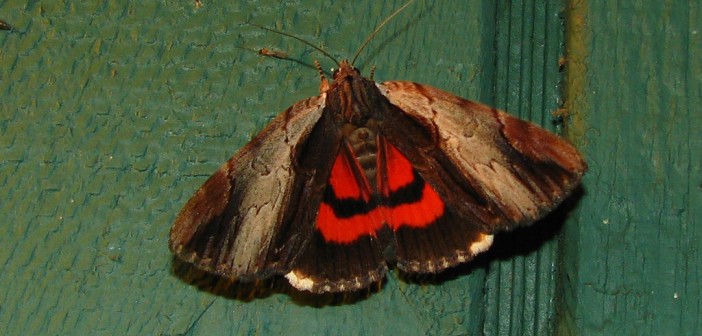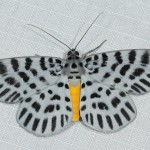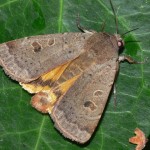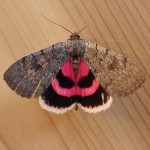(Featured image: Ultronia underwing, Catocala ultronia. Credit kestrel360, used under CC BY-NC-ND 2.0)
Registration in Full Swing for 5th Annual National Moth Week, July 23-31, Celebrating Importance, Diversity & Beauty of Moths Worldwide
Spot any underwings lately? These popular moths – known for revealing their true, vibrant colors when their wings are fully spread – will be spotlighted this summer as National Moth Week marks its milestone fifth consecutive year across the United States and around the world, July 23 through July 31.
Moth-ers – young and old, new and experienced – will be looking for underwings and other moth species at hundreds of private and public mothing events. Online registration is in full swing with events already registered in 24 countries and 21 states.
“Moths have always had a loyal fan base among entomologists and hobbyists, but National Moth Week has helped to increase their popularity among the general population,” said NMW co-founder Dr. David Moskowitz. “By bringing them to light, so to speak, this citizen science project is educating people about their beauty, diversity and value to the environment.”
National Moth Week (NMW) shines a much-needed spotlight on moths and their ecological importance, as well as their incredible biodiversity. While moths often have taken a back seat to their more admired Lepidoptera kin – butterflies – there is growing interest in their role as pollinators and as a food source for other animals. Scientists also look for the impact of climate change on their numbers and distribution.
Anyone can register a public or private event or find one to attend in their area by checking nationalmothweek.org
Studying moths can be as easy as turning on a porch light and waiting for them to come, or shining a light on a white sheet in a backyard or park. Ambitious moth-ers also coat tree trunks with a sticky, sweet mixture of fruit and stale beer. Searching for caterpillars and day-flying moths is a good activity for daytime. The NMW website offers tips on attracting moths. So long as you don’t pick up the moths, and make sure they all fly away after your event, NMW activities should not be harmful to the insects.
“The techniques are the same, whether they are done by a professional entomologist or novice citizen scientist,” said NMW co-founder Liti Haramaty.
- Genus Bracca, Malaysia. By David Fischer.
- Lesser Yellow Underwing (Noctua comes).
- Catocala concumbens. By Carl D. Barrentine.
Participants are invited to contribute their photos and findings to NMW partner websites, as well as the NMW Flickr group, which now has nearly 15,000 moth photos from around the world.
This year’s spotlighted moths, commonly known as underwings, comprise the genus Catocala, which is part of the large Erebidae family. There are more than 250 known species of Catocala, with about half found in North America, while the rest are in Europe, Asia and the tropics. Their dull-colored forewings, serve as camouflage while at rest. However, when they spread their wings, they reveal strikingly colorful hindwings with orange, red, white or blue markings.
As underwings show, moths, like butterflies, display some of the most vibrant colors and patterns found in nature.
National Moth Week was founded in 2012 by the Friends of the East Brunswick (N.J.) Environmental Commission, a nonprofit organization dedicated to environmental education and conservation. It is now one of the most widespread citizen science projects in the world. It is coordinated by an all-volunteer team in New Jersey, New York, Ecuador and Belize. For the past four years, public and private mothing events have been held annually in all 50 states and a total of 65 different countries. The NMW website features an events map showing the locations of events around the world.
For more information about National Moth Week, visit the website at nationalmothweek.org, or write to info@nationalmothweek.org.








